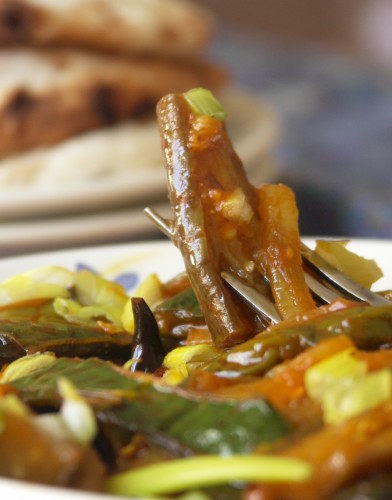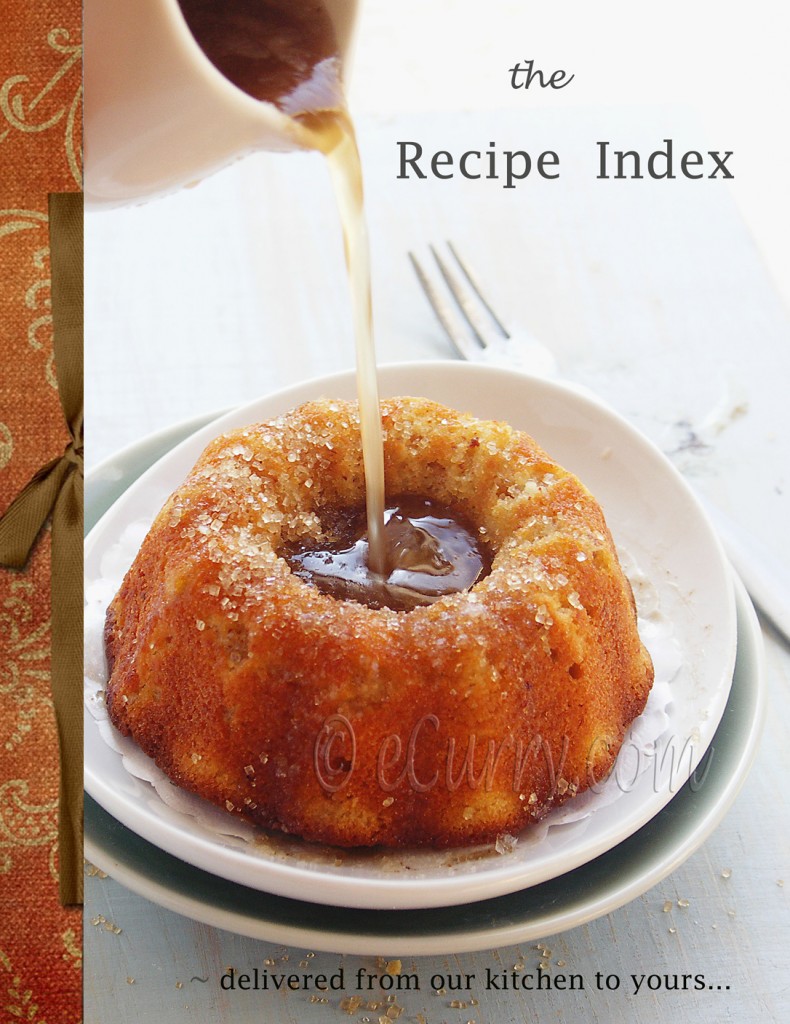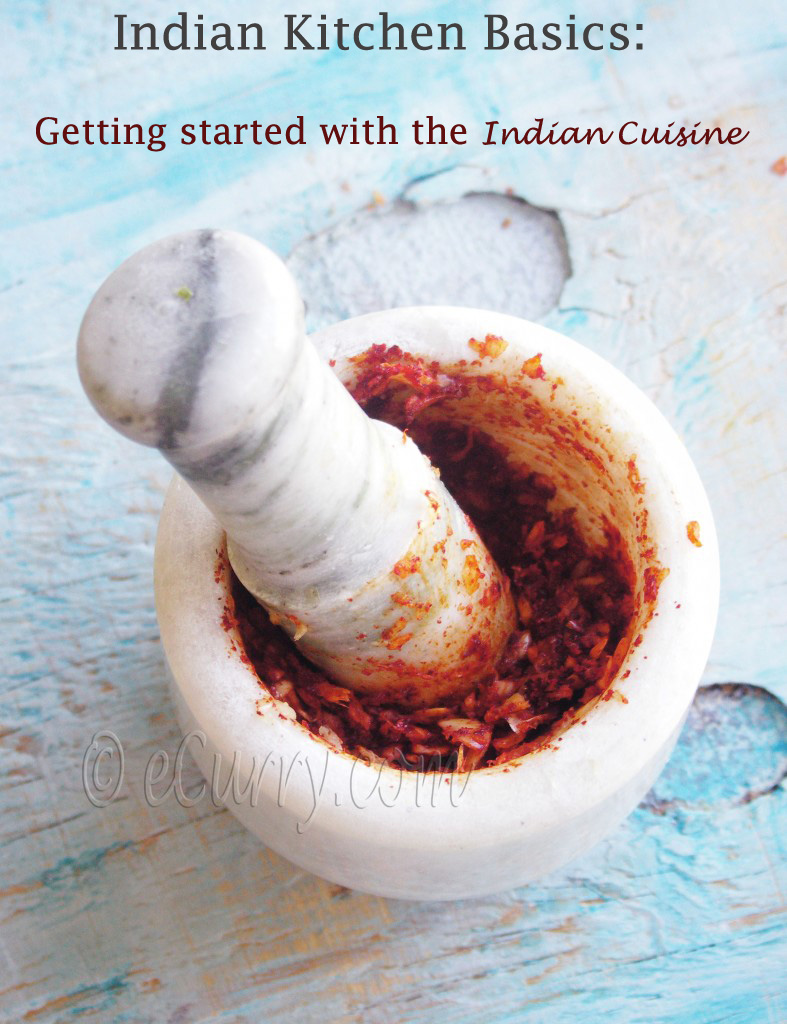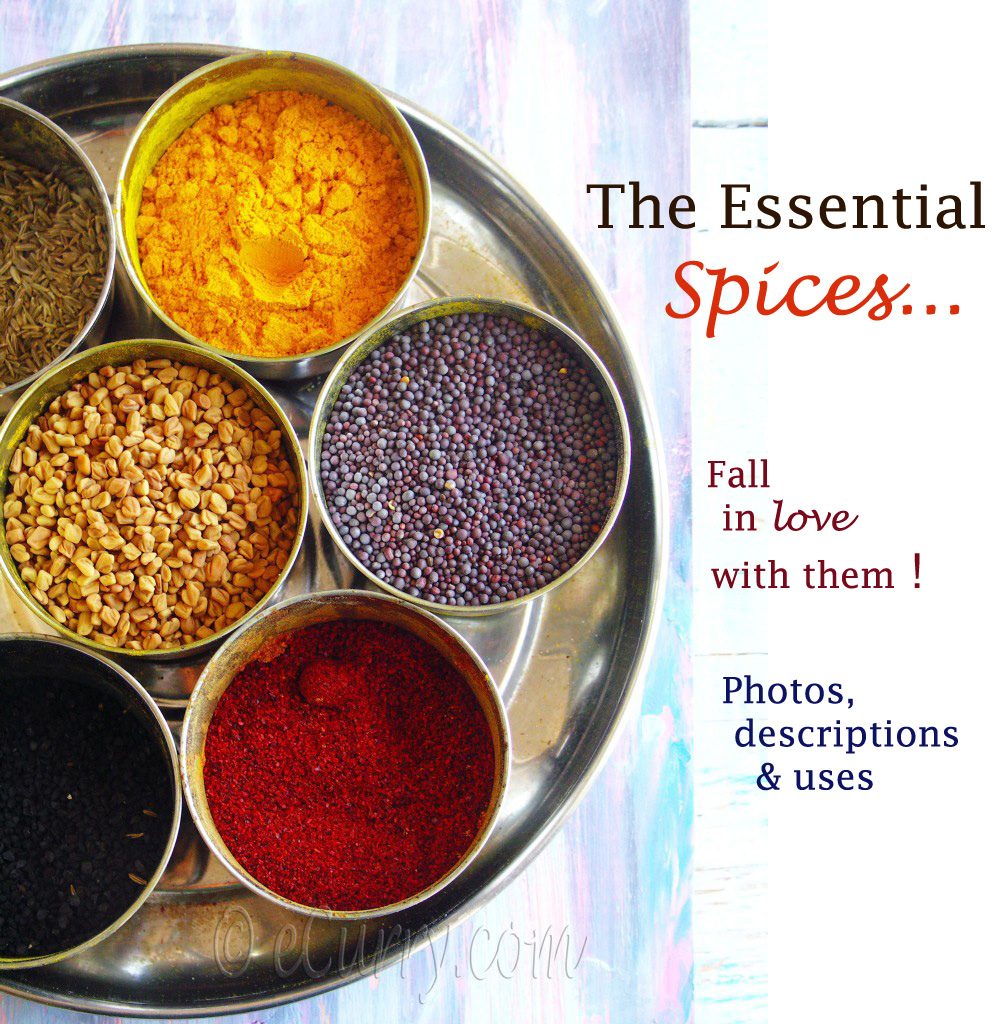
The other day we went out for dinner with a family who had a question about Indian Culture. They wanted to know why Indian Women wear the “DOT” on their forehead. Well I think that the subject is worth exploring. Why do you think Indian Women wear Bindi? I know it is not just the women, or just the married women, who wear the bindi, or tika, or the tilak. One theory I heard which I never came across is that the point between the forehead is a good accupressure point for expecting women, hence married women wear the so called “dot”. Please let me know your views…
Now coming to the recipe…
I love Brinjals, or Eggplant, or Aubergines or whatever you may want to call it. I love it becoz, whatever you add to it, it absorbs it, and every time it is a different flavor and taste. Think about the versatilty of this purple item… & in how many different ways it is used around the world.
This dish of mine is a fusion of South Asian & Indian spices. It has the curried feel of the Indian dishes, but is mostly done with South Asian ingredients. Soy Sauce is one of my quick fix thing that I always have at home. I had once made a similar dish with chicken, but I wanted to make a vegetarian dish in the same way. So one evening when I decided to cook eggplant, I thought I would try the same recipe. Eggplant has a texture that would make a great substitute for chicken.
Ingredients:
- 3 Chinese Eggplants
- 1 Large Red or Yellow Onion
- 2 Poblano Peppers (May be substituted with any large Peppers)
- 4 cloves of Garlic chopped & mashed
- 2″ Ginger Grated
- 4 Whole Dry Red Chilli Pepper
- 4 Tablespoons of Light Soy Sauce
- 1/2 Cup Tomato Puree
- 1/2 teaspoon Turmeric
- Salt
- Green Spring Onions chopped for Garnish
- 4 Tablespoons Oil
Preparation:
Slit the Eggplants into 4 verticals and then chop them in 2″ length. Wash & Sprinkle salt & turmeric on them and Keep aside.
Cut the Poblano peppers into half, deseed & slice then into strips. Keep aside.
Heat Oil in a flat, thick bottomed pan. Add the Red Dry Peppers. When they become dark Brown, add the Sliced onions, the Poblano Pepper Strips & the mashed garlic. Fry at high heat till the onions start to slightly brown and the Pepper start to brown on their skin.
Add the Eggplants/Brinjals/Aubergines, Tomato Puree & the Grated ginger & toss till they are kind of coated with the oil & the onions. Cover and cook till the eggplants are almost done. Do not make them mushy, they will have to retain their shape. Uncover and add the salt, & Soy Sauce and fry at high heat till the eggplants are cooked and the liquid reduces.
Garnish with chopped Green/Spring Onions.

Serve with Tandoori Roti, or Naan or Kulcha, Plain Roti/Phulka or fill a Pita Pocket. It tastes good on light Fried Rice too.

This is something which cooks really fast, & I prefer this kind of recipe in the everyday grind, where one has to come up with something quick, easy yet tastes delicious.
Related Posts:
Eggplant Caponata
Cauliflower Stir Fry in Ginger & Soy Sauce
Pumpkin with Homemade Harissa












Soma,
So many views are there with forehead bindis.Religious perspective is that red sindura represents “SHAKTHI” and woman in the house represents SHAKTHI
And,Ayurveda and yoga science says,Bindi on forehead activates Ajna chakra and forehead chakra,which plays a vital role in a woman’s emotional and physical life.By activating ajna chakra it controls and energizes pitutery gland & endocrine gland..so many scientific things to describe..
the dish looks superb too
I am looking forward to read the view about this in this post. So i am sure going to come and check the comment in few days.
Actually lot of my friends ask thesame question to me when i wear a bindi too.
ok, that was an interesting thought to ponder upon !!
I will try to explain the original meaning and reason of the “DOT”
The dot is a Hindu, not Indian, tradition. It is a common mistake to confuse and confleunce the 2 terms – Hindu and Indian..
Traditionally, the dot carries no gender limitation: male and female would wear it. The tradition of men’s wearing the tilaka has faded in recent times, though, so nowadays we see a lot more women than men sporting one.
The position of the tilaka or the “DOT ” is standard: centre of the forehead. It represents a third, inner eye. Hindu tradition holds that all people have three eyes, the two outer ones used for seeing the outside world, the third one focusing inward toward God. As such, the red dot signifies piety as well as serving as a constant reminder to keep God in the front of a believer’s thoughts.
…With passage of time, we often forget the original implicatio and now, its worn more as an ornament type – something that goes well with Indian attire ! ( I wear them too when I put on a saree and sindoor )
…..
…must forget to mention here – the recipie is awesome !!!
Nope i too don’t have any idea. The 2 other comments are pretty interesting. The dish looks delicious.
[…] Eggplant/Brinjal with Poblano Peppers | eCurry – The Recipe Blog […]
that looks awesome. great with chinese rice. nicely presented.
Such a beautiful recipe! I too adore eggplants – they are so versatile, just as you said! Thank you for the lovely showcasing of eggplant!
This recipe sounds delicious, Soma! The second picture is awesome. So many beautiful colors together.
Mohana and Ann have explained it well. What my mother read in a magazine was that the center of the forehead (like Ann said) is a powerful point. In fact most hypnotists use this point to hypnotise their clients. In the earlier days the women wore bindis to cover that area which can be concentrated upon and make them victims. I do not know how far this theory is true – afterall there is no base except the chakra. I do not wear a bindi for the simple reason that any sticker there causes me severe headache – maybe my chakra is already awake;), or dormant:(!! If I do, it is usually for functions to look nice!!
thx for refreshing the meaning of bindiya!loved the recipe though!!
I have heard both what Mohana and Sunshinemom have mentioned here. About the center of the forehead being very powerful and hence covering it and also being the third eye. Maybe they are all true or maybe not.
Ur dish combining the poblano peppers and egpplants looks really interesting, I will try it sometime.
I’ve heard all the views earlier – the third eye, the nerves, the chakras. I’ve always worn a bindi, so can’t say if it’s had any effect. The toe rings are also associated with some physical benefits, I’ve heard.
I quite like brinjal and have used them with a variety of other veggies earlier, never with tomato puree, though!
Soma,
well I love wearing bindi …
It’s very interesting to read these thoughts here …Chakras and third eye WOW !
Oh ! I just love anything which goes with Begun or Aubergine or Brinjal or Eggplant .
hugs and smiles
Love the different views coming up Soma … u have indeed started a good topic of discussion. So many interesting reads. 🙂
And your recipe sounds and looks delicious! 🙂
I trust you that it’s quick – it looks fantastic!
Hi Soma, Lovely, lovely recipe. I can imagine the wonderful taste of the poblanos complementing the creaminess of eggplant perfectly.
As for the bindi theories, here’s my take which might not be the popular one, but still could well be true: the bindi, like many other symbols of marriage that women in India and elsewhere wear, originated as a way for the men to stamp their ownership. There are lots of pretty stories that were made up around these symbols so subsequent generations would continue to buy them, and it appears we have 🙂
That’s an interesting topic you brought up for discussion Soma! I’ve heard the third eye theory too… Anyway, I stopped wearing a bindi years ago so if there are any actual physical benefits, I sure am missing out 😛
Oh, lovely pictures of the dish btw, I am very neutral about eggplant, love a few dishes, but don’t care for most. Guess I could just use chicken in this one, eh? 🙂
Soma,
The recipe looks good as well as the pictures…This morning Azal was just practicing her presentation for next week about her culture…I asked her what she is going to talk about…She said the most important things about India are three things…First one is Bindi then Sari and then Taj Mahal…I just opened your blog and noticed this discussion..I am going to tell her all about Bindi now…I did not know any of this….Thanks you and all…
Deho devalaym as our elders say in some book s and puranas DEHAM —Body, DEVALAYAM — god s living place as in a temple the inportent place is garbh gugi (where god siting that place ) so in our body head takes that place so if we aply chandan and sindur that we are offering to god and one more thing bindi meens not that sticker one tha treditionalway is frist you have to put a pinch chandan mix with water and then put sindur on it this is the treditional way yes as ann sead it is a place of ajna chakra it produces heat so if we aply chandan there it cool s your body and lots more to tell I hope you all understand my view this is my view yes it is a hindu tradition not indian
any way curry looks so delicious soma never try this chilies will try now thanks for the recipe
I also love anything indo-chinese fusion…recipe sounds and looking gr8..click gulo darun hoyeche..brilliant and it’s nice to know all the interesting facts about bindi..good topic
great info on bindi…n lovely brinjal dish…
i don’t wear bindi…unless m wearing a saree…n thts beacuse it looks good..lol
Seems that I am missing out on something by not sporting a bindi! Lovely brinjal dish. The husband doesn’t care too much for eggplant…now if I made it like this, even he cant resist, I am sure.
Sorry Soma, I had a pretty interesting time reading all those comments… never knew the significance myself, at least to this extent.
What Vaishali says seems to be a valid point to consider.
Nice topic to discuss. Eggplants look appetizing.
i’ve always wondered why western men wear nooses (ties) around their necks. anyone knows why?
Interesting discussion on bindis.So many theories and assumptions.I think it is a personal choice.I also side with bee on ‘ties’.Had good time reading all the comments.The dish surely is quick and looks perfect with rice & rotis.
the pictures look lovely! And a lovely combination of vegetables. Delicious!
what I would like to know is – to which times / period in Indian history do the earliest records of the use of tilak or bindi date back to.
That was a lot of different views.. Here is my assumption.
The thing about the third eye, or the power point would be true, as all the yoga & meditation techniques relate to that. However I do not think thats the reason women wear bindi these days( or rather made to wear in some parts of India).. simply becoz, if it relates to well being of a person, men would be wearing it too. (some still do, but there is no compulsion & it is done for reasons of worship).
It might have started off as a Tilak of chandan or other stuffs applied to the fore head … for all. But now, where it is made a rule, i agree with Vaishalli, as the same goes with Sindoor in the partition of hair & the iron bangle (which married women wear in Bengal) are all signs of male dominance…
For me, its looking good with traditional outfit.
As for the “noose”, I agree… Thank God I don’t need one:-)
Interesting discussion on bindis…I love wearing bindis….
your brinjal dish looks delicious….yes, similar to my recipe:)
I asked hubby and he gave me the sme answer Mohana gave.
Hi hi I love bees question, I am gonna ask that to my hubby when he comes home 🙂
Bookmarking this. Sounds delicious!
Cheers,
Elra
I remembered reading this somewhere, so I tracked it down.
“The tilak or pottu invokes a feeling of sanctity in the wearer and others. It is recognized as a religious mark. Its form and colour vary according to one’s caste, religious sect or the form of the Lord worshipped.
In earlier times, the four castes (based on varna or colour) – Brahmana, Kshatriya, Vaishya and Sudra – applied marks differently. The brahmin applied a white chandan mark signifying purity, as his profession was of a priestly or academic nature. The kshatriya applied a red kumkum mark signifying valour as he belonged to warrior races. The vaishya wore a yellow kesar or turmeric mark signifying prosperity as he was a businessman or trader devoted to creation of wealth. The sudra applied a black bhasma, kasturi or charcoal mark signifying service as he supported the work of the other three divisions.
Also Vishnu worshippers apply a chandan tilak of the shape of “U,” Shiva worshippers a tripundra of bhasma, Devi worshippers a red dot of kumkum and so on).
The tilak cover the spot between the eyebrows, which is the seat of memory and thinking. It is known as the Aajna Chakra in the language of Yoga. The tilak is applied with the prayer – “May I remember the Lord. May this pious feeling pervade all my activities. May I be righteous in my deeds.” Even when we temporarily forget this prayerful attitude the mark on another reminds us of our resolve. The tilak is thus a blessing of the Lord and a protection against wrong tendencies and forces.
The entire body emanates energy in the form of electromagnetic waves – the forehead and the subtle spot between the eyebrows especially so. That is why worry generates heat and causes a headache. The tilak and pottu cools the forehead, protects us and prevents energy loss. Sometimes the entire forehead is covered with chandan or bhasma.”
Personally, from all that – it occurs to me that it might have just been a way to identify or differentiate the different castes….the energy part and piousness seems to be an afterthought.
I have heard of South American tribes having different markings on their body to differentiate themselves – I guess this is one form of the same thing. And sindur or bindi for married women would be like the wedding ring in the West – a sign that says “Keep off” 🙂
Miri
Made this a few days ago and it was delicious. Also enjoyed the the bindi discussion. Thanks!